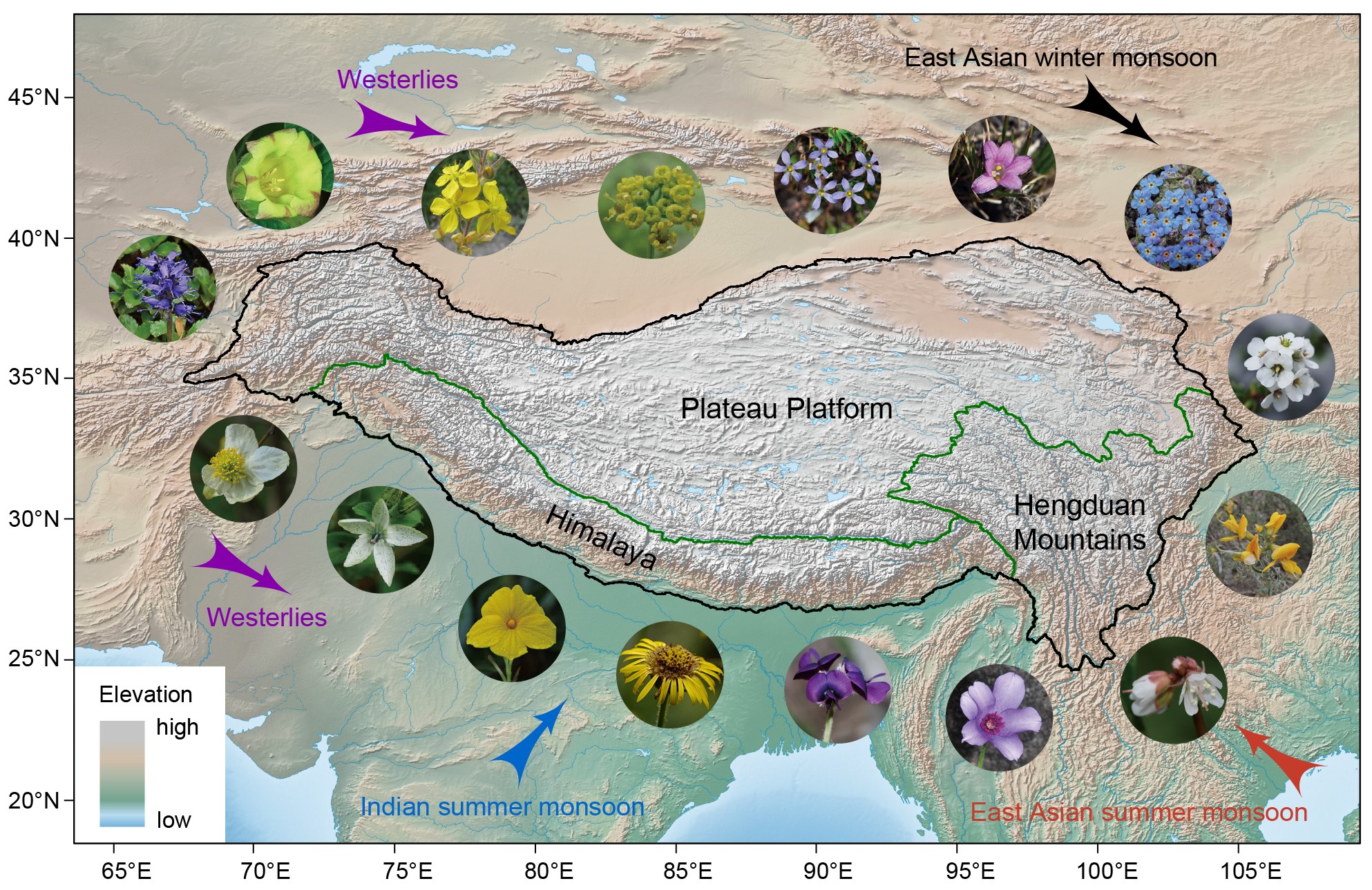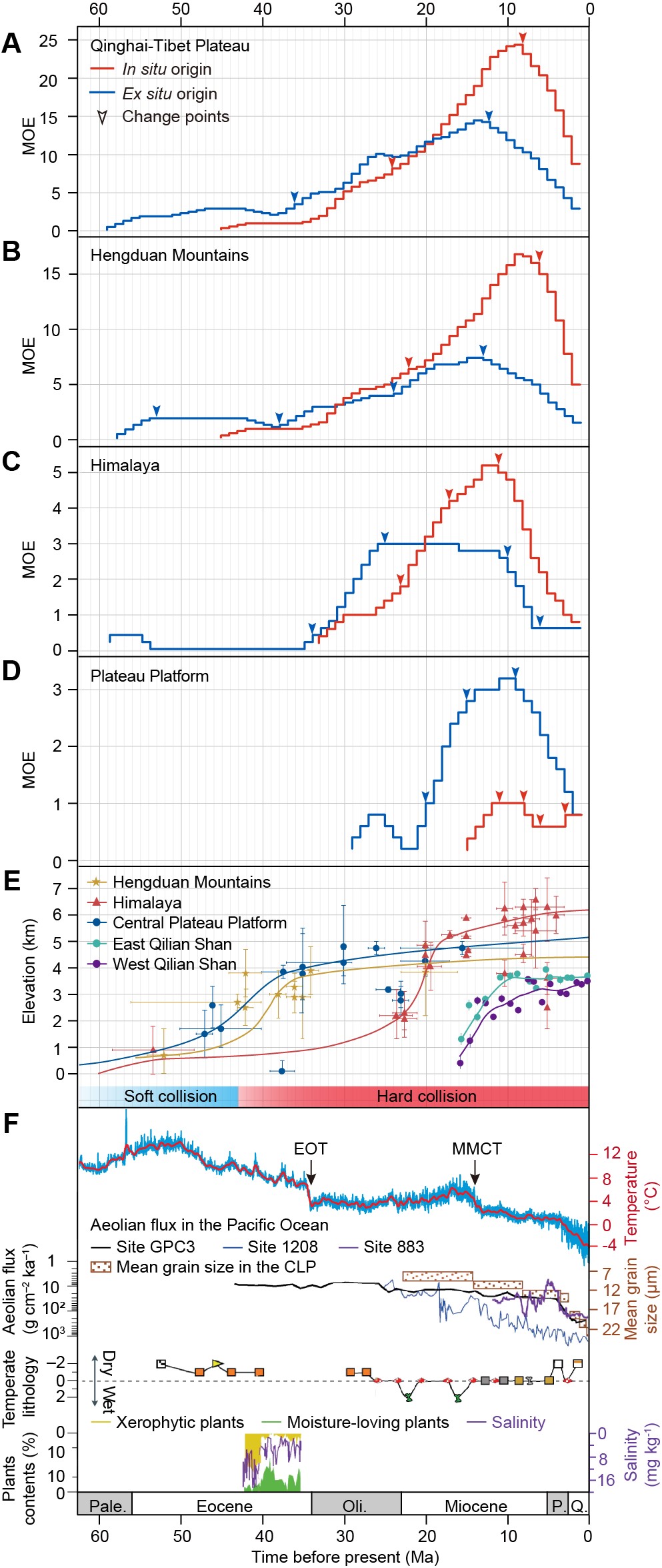A team of researchers led by Prof. WANG Wei from the Institute of Botany of the Chinese Academy of Sciences (IBCAS) has revealed how unique native plant life on the Qinghai-Tibet Plateau (QTP) has evolved over time, shedding new light on the origins and development of one of the world's most biologically diverse temperate regions.
The study was published in PNAS.
The QTP, comprising three subregions-the Plateau Platform, the Himalaya, and the Hengduan Mountains-is home to two global biodiversity hotspots. It supports the richest temperate flora on Earth and exhibits an exceptionally high degree of endemism. However, these fragile mountain ecosystems are increasingly threatened by global warming and human disturbance, making it critical to understand their evolutionary history for effective conservation planning.
In this study, the researchers selected 37 land plant clades with 1,740 species covering all 82 genera endemic to the QTP. They found that the origins of these endemic genera were most likely driven by ecological niche and elevation differentiation, caused by the uplift of the QTP and associated climate change.
The researchers suggest that QTP floristic endemism emerged by the Early Eocene, and the unique biodiversity of the QTP reflects both species that evolved locally and those that migrated in from elsewhere.
In addition, the study shows that among the three subregions of the QTP, the processes associated with floristic endemism are asynchronous, reflecting different geoclimatic events-with the Miocene as a particularly critical period.
"We found that the origin of QTP floristic endemism dates back to the Early Eocene, which is much earlier than the prevailing view of when this flora first appeared," said Prof. WANG, corresponding author of the study. "Both long-term in situ speciation and immigration have been responsible for the assembly of the endemic flora of the QTP, but their contributions in the three subregions appear markedly different."
The study also highlights the Hengduan Mountains as a crucial center of endemism. Identified as hosting the oldest endemic lineages and functioning as both a "pump" and a "sink" of biodiversity, this region emerges as a top conservation priority for future biodiversity protection efforts.

Topographic map of the Qinghai-Tibet Plateau and representative plants (Image by IBCAS)

Occurrence dynamics of the recognized endemic genera of land plants from the Qinghai-Tibet Plateau in relation to Cenozoic geoclimatic changes (Image by IBCAS)






